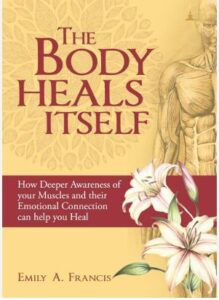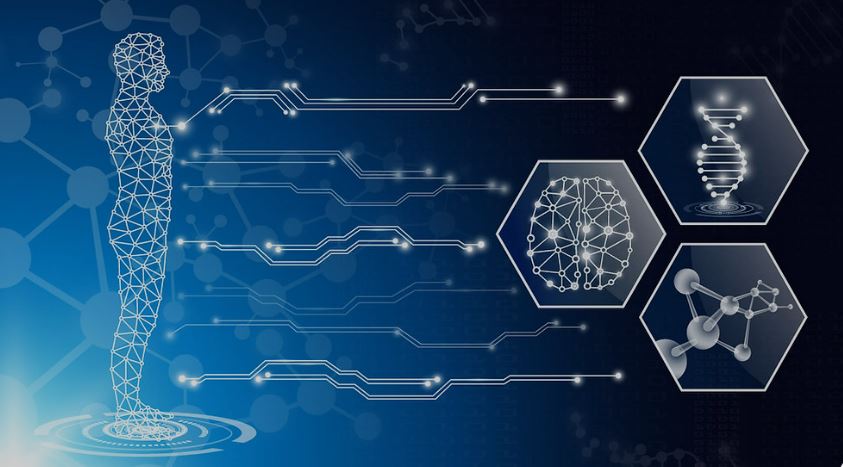Lets understand the process of how your body heals and repairs itself from the inside. The human body is an incredible biological machine – intelligent, adaptive, and resilient. One of its most awesome abilities is self-healing. From minor cuts to broken bones, the body has systems in place to repair damage, often without us even realizing it. But how does this internal repair system work? Lets get to know by following process.
The First Response: Inflammation
Whenever your body experiences an injury—whether it’s a bruise, cut, or even internal damage—the first thing it does is launch an inflammatory response.
What happens?
- Blood flow increases to the area, carrying white blood cells.
- You may feel pain, heat, redness, or swelling—all signs that your immune system is at work.
- White blood cells (like neutrophils and macrophages) clear out damaged cells and fight off any bacteria or pathogens.
This phase is like the body’s emergency response team—showing up quickly to assess the damage and prevent further harm.
Cell Regeneration and Repair
Once the area is cleaned up, your body begins to rebuild.
Two pathways of healing:
- Regeneration: The damaged cells are replaced by the same type of cells (e.g., skin, liver, or intestinal cells).
- Repair: The body uses a different type of tissue, like collagen (scar tissue), to patch up more serious injuries (e.g., deep cuts or muscle tears).
Stem Cells: The Body’s Building Blocks
In many tissues, stem cells play a key role. They are like blank slates that can transform into different cell types—skin cells, muscle cells, or nerve cells—depending on where they’re needed.
Blood and Oxygen Support Healing
Healing needs fuel—and that comes from your blood.
- Red blood cells carry oxygen to the damaged tissues, which is crucial for energy and cell growth.
- Platelets help clot blood and release growth factors that signal the body to grow new tissue.
- Nutrients like amino acids, vitamins (especially C and D), and minerals like zinc play a vital role in tissue building.
This is why eating well, staying hydrated, and getting enough sleep all support your healing process.
Nervous System & Hormones: Silent Managers
Behind the scenes, your nervous system and hormones guide the repair work.
- The brain sends signals through the nervous system to direct healing where needed.
- Hormones like cortisol (inflammation regulator), insulin (glucose transport), and growth hormone (tissue growth) help coordinate the process.
Even your mood and stress levels can impact how fast or slow you heal. Chronic stress can actually slow healing by increasing inflammation and suppressing immune function.
Special Case: Bone Healing
Bone healing is a bit different—but just as amazing.
- Inflammation: Blood clots form at the fracture.
- Soft callus formation: Collagen and cartilage form a bridge across the break.
- Hard callus formation: Bone cells replace the soft callus with new bone.
- Remodeling: Over months, the bone reshapes itself to match its original form.
With enough time and rest, a broken bone can be just as strong—or even stronger—than before!
How You Can Support Your Body’s Healing
While your body is naturally designed to repair itself, you can help it with some simple but powerful habits:
✅ Eat nutrient-rich foods: Protein, leafy greens, fruits, and nuts.
✅ Stay hydrated: Water helps transport nutrients and flush out waste.
✅ Get rest and sleep: Healing hormones are released during sleep.
✅ Reduce stress: Try meditation, deep breathing, or journaling.
✅ Avoid smoking and alcohol: They slow down healing by affecting blood flow and immune function.
✅ Stay active (when safe): Light movement can boost circulation and promote faster recovery.
Healing Is a Journey, Not a Race
We often want instant results—but healing takes time. Whether it’s a scraped knee, a torn ligament, or even emotional trauma, the body follows a sequence that can’t be rushed. It’s a process of destruction, renewal, and growth.
Your body is always working with you, even when you’re unaware of it. Every breath, every heartbeat, every repaired tissue is proof of your body’s will to survive, repair, and thrive.
The Immune System Detects and Destroys Abnormal Cells
Your immune system is your body’s internal defense army. Every day, it identifies and eliminates damaged or abnormal cells—including potential cancer cells—before they can multiply.
- T-cells and Natural Killer (NK) cells play a key role in recognizing and destroying early cancerous or precancerous cells.
- When your immune system is strong, it can keep rogue cells in check.
👉 But when the immune system is weak (due to stress, poor nutrition, inflammation, etc.), cancer cells can grow unchecked.
Healthy Habits Create a Healing Environment That Slows Cancer
Cancer thrives in conditions like:
- Chronic inflammation
- Poor oxygen supply
- High blood sugar
- Toxin buildup
- Weak immunity
By adopting healing habits, you help change the internal environment and make it harder for cancer cells to survive.
- Anti-inflammatory foods (e.g., leafy greens, turmeric, berries) reduce internal inflammation.
- Exercise and deep breathing improve oxygen levels in tissues.
- Fasting or balanced diets help reduce blood sugar and insulin spikes that feed cancer cells.
- Detoxing through hydration, fiber, and liver support helps flush toxins that damage DNA.
Cell Repair and Apoptosis (Self-Destruction of Bad Cells)
Our cells have built-in programs to repair themselves or self-destruct if they become too damaged—this is called apoptosis.
Healthy healing mechanisms (like proper sleep, nutrients, and low stress) support this process.
Cancer cells often avoid apoptosis, but some natural compounds (e.g., from green tea, curcumin, cruciferous vegetables) may trigger it in certain cancer cells. This is a key area of research in integrative and nutritional oncology.

Healing Through Food: The Heart-Healthy Diet
- Increase:
- Leafy greens
- Berries
- Nuts and seeds
- Beans and legumes
- Whole grains (like oats and quinoa)
- Healthy fats (olive oil, avocado)
- Fatty fish (like salmon)
- Avoid or limit:
- Sugar-sweetened drinks
- Processed foods
- Deep-fried snacks
- Red meat and processed meats
Healing Blood Markers: Cholesterol, Sugar & Pressure
Healing through lifestyle directly improves:
- LDL (bad) cholesterol ↓
- HDL (good) cholesterol ↑
- Blood pressure ↓
- Blood sugar ↓
This reduces the risk of plaque formation, artery blockage, and heart strain.
Restorative Sleep – The Silent Healer
Sleep is when your heart and vessels repair. Poor sleep raises cortisol, blood pressure, and inflammation.
✅ Aim for:
- 7–9 hours of restful sleep
- A calm bedtime routine (dim lights, no phone before bed)
- Cool, quiet sleeping environment
Healing Ways to Reduce Heart Attack Risk
| Healing Area | Action Steps |
| Blood Vessels | Whole foods, exercise, no smoking |
| Inflammation | Anti-inflammatory diet, stress relief |
| Heart Muscle | Exercise, magnesium, sleep |
| Emotional Health | Meditation, therapy, connection |
| Nutrition | Plant-based, low sugar, high fiber |
| Blood Markers | Track & reduce LDL, BP, glucose |
| Sleep | 7–9 hours daily, sleep hygiene |
Summary
Healing is more than just a physical process—it’s a mind-body connection. When you care for your body and mind together, the effects are powerful and lasting.
Your body is always working with you, even when you’re unaware of it. Every breath, every heartbeat, every repaired tissue is proof of your body’s will to survive, repair, and thrive.
